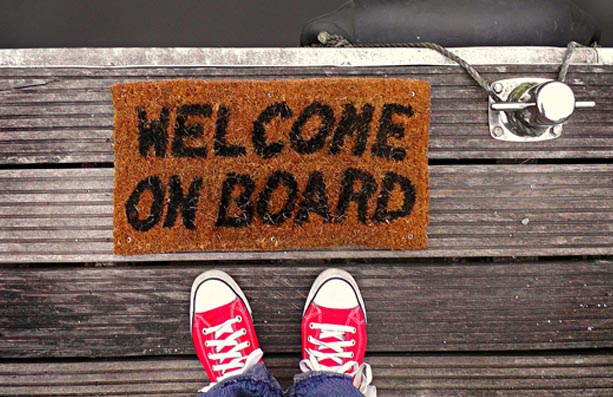Share

Peer-to-peer fundraising has been growing in popularity for decades. CIBC’s Run for the Cure is a volunteer-driven, single day event that involves nearly 100,000 participants and raises about $17 million a year towards breast cancer research. It takes place in various communities across Canada. The Heart and Stroke Foundation’s Jump Rope For Heart encourages schools all over the country to join their skip-a-thon and raise money for research that prevents heart disease and stroke. There are many examples, big and small, of the traditional peer-to-peer fundraising model.
But a new trend is emerging and, like all good trends, it has a catchy name: DIY Fundraising.
Unlike the traditional peer-to-peer model where the charity or nonprofit organizes and sets the event schedule, DIY fundraising puts your supporters in the driver’s seat of their own ideas. While traditional peer-to-peer fundraising events are usually restricted to one day or a certain period of time each year, DIY fundraising events are spontaneous in nature and take place when and where the fundraiser decides.
A DIY fundraiser will organize the event themselves, leverage their own personal network and share their passion for your cause! They may not have hundreds of participants in their event, but those that do participate are engaged in a very meaningful way. Your organization needs to provide support and guidelines which allow these passionate people to generate and execute their own fundraising ideas.
To encourage DIY fundraising, the Alzheimer Society’s website offers success stories from past DIY fundraising campaigns such as Stevie McNeil’s 19 hour and 26 minute skate honouring the year his mother was born or twelve year-old Alyssa’s pencil-selling fundraiser for her papa.
How do we attract our first DIY fundraiser?
Your volunteers and loyal supporters are prime candidates to launch their own fundraising initiatives because they have a strong connection with your organization. Start by communicating that this is an option to your closest supporters and provide a menu of ideas to get them interested. Here are a few ideas to get your DIY fundraisers started:
- Host a ‘Friend-raiser Wine and Cheese’ at your house
- Ask for donations to a charity in lieu of gifts for a celebration
- Ask for donations to a charity in memory of someone who has passed away
- Give something up for a month to raise awareness and set a fundraising goal (it’s even better if this aligns with mission of your organization. For example, a DIY fundraiser for an environmental organization could participate in ‘Plastic-free’ July to engage their networks and raise money)
- Create your own challenge (hike, bike, meditate, etc…) in support of your favourite cause
To attract new people to your organization, you need to identify who makes up your potential audience. Your potential audience is already aligned with your cause but they haven’t met you yet. Where do people that care about your cause live, work or volunteer? How do they stay informed about the issues that are close to their heart? If you can find out the answers to these questions, you will find a source of DIY fundraisers and supporters. If you are struggling to heighten the awareness of your organization’s impact, I would recommend watching Julia Campbell’s recent webinar: Digital PR Basics for Nonprofits.
How do we encourage and support our DIY fundraisers?
Make it easy for people to navigate your website.
Demonstrate the different ways in which people can support your organization on your website and in your direct mail. Do this with simple messaging and intuitive menu options. The YWCA is a great example of simple and direct navigation from it’s home page to it’s ‘Fundraise for Us’ page.
I’m sure you’ve heard a fundraising professional tell you that the key to securing a donation is simply to ask for it. Well, the key to attracting DIY fundraisers is to ask people to get involved or help support your cause. If your website doesn’t have something like a ‘Get Involved’ button, then you could be losing opportunities to attract new volunteers, donors or DIY fundraisers.
Inspire people with DIY fundraising ideas and success stories.
Your website is the perfect platform to host a whole menu of ideas to invite and inspire people. That being said, you are not limited to online communication streams. You can also integrate DIY fundraising ideas and success stories into your favourite communication tool. Where do you reach your supporters most effectively? If you have high response rates from direct mail, then include a Call to Action for DIY fundraisers in your next mailing. If you have a strong open rate with your e-newsletters then integrate your Call to Action with a link to your new DIY fundraising web page.
Support your DIY fundraisers with a real person!
Small charities and nonprofits are less likely to have sophisticated online forms that guide prospective DIY fundraisers through a process than larger organizations, but you can direct supporters to one of your staff members or volunteer coordinator. Designating a staff member to handle these inquiries ensures that DIY fundraisers get the support they need from your organization to make their event a success.
How do we thank our DIY fundraisers?
Acknowledge the impact that their efforts have made on your organization and the cause about which the DIY fundraiser cares so deeply. Acknowledge that the DIY fundraiser’s contribution is not simply financial, but that it has helped bring people to your cause. Your DIY fundraiser has used their reputation to engage a greater number of people in the amazing work of your organization.
Thank these DIY fundraisers with personal, hand-written cards that capture your gratitude for all the time and effort that was put into their event. DIY fundraisers are unique and wonderful supporters of your organization, but they won’t ask for recognition! Make sure you let them know how important they are to your mission.





